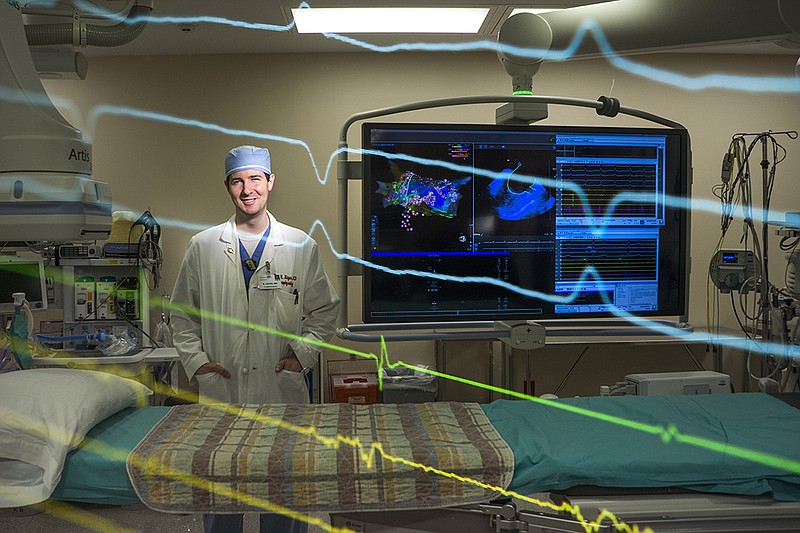CHRISTUS St. Michael recently expanded cardiovascular services in this region by opening a state-of-the-art electrophysiology lab.
The project came with a $2.7 million price tag.
"It's an investment in our community," said Francine Francis, St. Michael director of communications. "The reason we're willing to make this investment is to provide this service for people in our community and Four States Region so they're not having to leave town for this."
Dr. Kevin Hayes, of Texarkana Cardiology Associates, is director of the electrophysiology lab.
"We deal with heart rhythm disorders here," Hayes said.
Irregular heartbeats can lead to a variety of complications including fatigue, congestive heart failure or stroke.
As a cardiac electrophysiologist, Hayes is referred to as an electrician of the heart.
"The normal cardiologists are doing heart caths. They're kind of the plumbers of the heart. They're looking at blood flow and taking care of things like that. Dr. Hayes is the electrician of the heart. He's looking at the electrical pathways," said Lisa Patterson, director of imaging services at St. Michael.
Disorders run the gamut from uncomfortable to life-threatening. The most common cause of an irregular heartbeat is atrial fibrillation which increases the risk of stroke, heart failure and other heart-related complications.
"Atrial fibrillation is a disorder that kind of happens to people as they get older. It seems to be a lifestyle problem, so people who smoke, have obesity and diabetes and all these other medical problems tend to also develop atrial fibrillation," Hayes said. "That's the one we deal with most commonly, but a lot of the other ones people are actually born with, so a lot of the arrhythmia we deal with are things people have been dealing with their entire lives and they've always been told they're anxious and they're actually having arrhythmias."
"It's important to know what's causing these issues, particularly atrial fibrillation. It's the No. 1 cause of stroke, so people can have very devastating strokes if they have AFib and they don't realize it. The other issues are more lifestyle problems. They make people feel bad, and affect their quality of life, but they're not really dangerous," Hayes said.
In the lab, EP studies are done to determine the cause of arrhythmia.
"We take wires up into the heart, and we map the electricity as it moves through the heart," Hayes said.
Ablation is one treatment that can be done in the lab.
"Ablation is where we go inside the heart and with very careful mapping, we burn a particular part of the heart where there's something wrong that's causing people to have arrhythmia or palpitations or whatever their symptom is. The burning is actually called ablation. We use radiofrequency energy to kill part of the heart that's causing trouble," Hayes said.
Patients have seen good results so far.
"When he can treat somebody and basically cure them, they're able to get off their medications," Patterson said. "Some of these patients with AFib are on blood thinners. They may be young. They feel bad, and they're on these medications that you wouldn't want to be on long-term. If you can kind of cure that more or less for someone, that's huge."
Hayes completed his undergraduate degree at Hendrix College in Conway, Ark. He went to medical school at the University of Arkansas for Medical Sciences. He's board certified in internal medicine and cardiovascular disease. He completed cardiovascular disease and clinical cardiac electrophysiology fellowships at UAMS and the University of Wisconsin-Madison.

